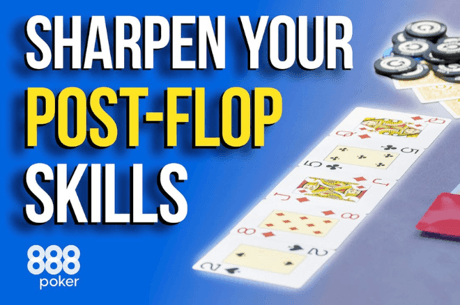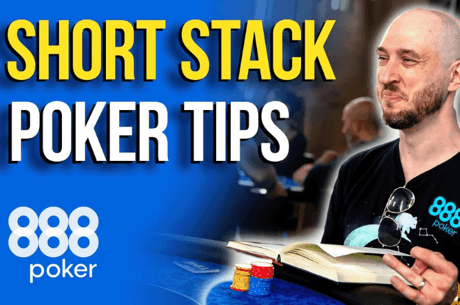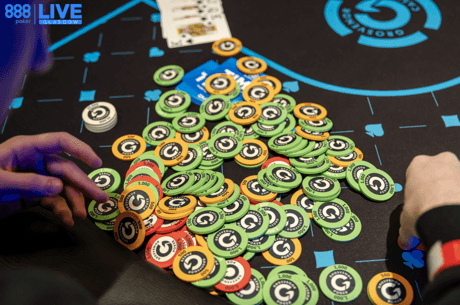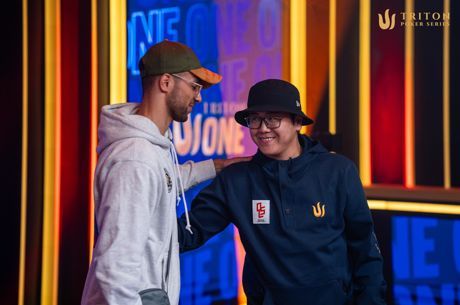Learn to Recognize Absolute and Relative Hand Values in Hold’em

Covering live poker tournaments for a living affords me the opportunity to see countless thousands of hands played out, many of which offer interesting and potentially valuable insights into how players — both amateurs and professionals — play the game. In this ongoing series, I’ll highlight hands I’ve seen at the tournaments I’ve covered and see if we can glean anything useful from them.
The Scene
This week’s hand comes from a tournament I covered about a month ago, the Mid-States Poker Tour Grand Falls Main Event that took place at the Grand Falls Casino Resort just outside of Sioux Falls, South Dakota. The tournament drew a field of 238 runners, and just three remained when this hand went down with the winner set to bank $64,655 and the next two payouts receiving $38,091 and $21,931.
The tournament is at Level 25 (15,000/30,000/4,000), and everyone left has a fairly deep stack considering they have reached the late stages. Jon Maras is leading with 1.925 million, Alan Curl (pictured above) is next with 1.825 million, and Kim Rasmussen is the short stack with about 1 million even. Most pots that have been contested have been played fairly aggressively, with pot-sized bets often the norm.
The Action
Maras folded from the button, leaving Rasmussen (small blind) and Curl (big blind) heads up. Rasmussen completed, and Curl checked his option.
The flop came 4♠7♣3♦ and Rasmussen led out for 120,000, more than the size of the pot. Curl peeled in position and both saw a 6♣ fall on the turn. Rasmussen slowed down with a check and this time Curl bet 120,000. Rasmussen then check-shoved with the 800,000 or so he had left and Curl called.
Curl: J♥5♠
Rasmussen: 7♠6♥
Rasmussen expressed regret that the card he had liked on the turn ended up sinking him, but nonetheless called for another seven or six on the river. Neither came as a 9♦ fell, ending his tournament in third.
Concept and Analysis

Both players elect to see the flop for the minimum in this hand, a reasonable decision considering their marginal holdings. Rasmussen then flops top pair with a gutshot straight draw, a hand he has to be pretty happy with considering he’s up against a range of any two cards from a check in the big blind.
He decides to overbet the pot, a decision which may look a little overaggressive at first glance but is essentially right in line with how the table was playing. Curl was likely to peel with plenty of hands worse than Rasmussen’s seven-six in this spot, and indeed he did so with a gutshot and an overcard.
Where Rasmussen runs into trouble is when he turns two pair, at which point he slows down with a check. That’s a perfectly reasonable play, but when Curl fires at the pot, Rasmussen makes a puzzling decision to shove all in. He has two pair, but with four to a straight on the board he can easily be drawing to just four outs on the river.
This is where it’s important to understand that every hold’em hand has two values — absolute value and relative value. Imagine you hold A♠A♥ on a board of 10♣9♣8♠6♣J♠. In a different hand, you hold the same A♠A♥, but the board is 7♠3♣2♣9♥Q♦. The absolute value of both hands is the same: one pair, aces. But the value relative to the board is worlds apart, as the second hand is much stronger.
In this instance, top two pair is a fairly weak hand considering any hand with a five in it makes a straight. Most of the time, top two pair is a hand we’re thrilled to have, and getting it in heads-up in a blind-versus-blind scenario would be a no-brainer.
By shoving all in, Rasmussen made the mistake of playing his hand based on its absolute value. He likely chased away any hands he was ahead of, and Curl indeed showed up with the winning straight to beat him. That pot vaulted Curl into the chip lead to begin heads-up play, and he soon prevailed to become an MSPT champion and winner of the $64,655 first prize.
Want to stay atop all the latest in the poker world? If so, make sure to get PokerNews updates on your social media outlets. Follow us on Twitter and find us on both Facebook and Google+!










